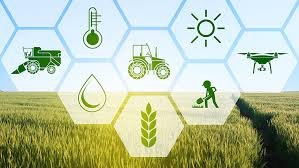
In Q2 2020, A.P. Moller – Maersk improved profitability across all businesses through agile capacity deployment, cost mitigation initiatives and adaption to changed customer needs. The earnings improvement was achieved despite the sharp drop in global volumes following the COVID-19 crisis.
“As expected, the second quarter was materially impacted by COVID-19 and our focus remained on protecting our employees from the virus, serving our customers by keeping our global network of ships sailing and our ports, warehouses and inland transportation networks operating, and helping the societies we are part of fight the virus,” says Søren Skou, CEO of A.P. Moller – Maersk and continues:
“I am pleased that we despite the headwinds, continued our track record of improving earnings and free cash flow. Our operating earnings improved by 25 per cent marking the eighth consecutive quarter with year-on-year improvements, driven by strong cost performance across all our businesses, lower fuel prices and higher freight rates in Ocean and increased profitability in Logistics & Services.
With a strong result and a strong balance sheet we are well positioned to financially and strategically come out stronger of the crisis.”
Earnings before interest, tax, depreciation and amortisation (EBITDA) improved to USD 1.7bn, which is higher than the initial expectations in the trading update from June of an EBITDA slightly above USD 1.5bn. The EBITDA margin increased from 14.1 per cent in Q2 last year to 18.9 per cent.
Revenue decreased by 6.5 per cent to USD 9 bn, driven by a volume decrease of 16 per cent in Ocean and 14 per cent in gateway terminals. In Ocean, the lower volumes were partly offset by agile capacity deployment of the global network leading to lower costs, together with lower fuel prices and higher freight rates. In Logistics and Services, profitability increased through cost measures, favourable airfreight contribution and the integration of Performance Team, while Terminals & Towage showed their resilience by compensating lower volumes through cost measures.
The continued focus on improving returns showed further results with cash return on invested capital (CROIC), last twelve months improving to 12.5 per cent from 8.9 per cent and ROIC, last twelve months increasing to 4.7 per cent from 1.4 per cent in the previous year.
The net interest-bearing debt was USD 11.6bn compared to USD 11.7bn by the end of 2019, as free cash flow of USD 1.5bn allowed for share buy-back, dividends and acquisitions in the first six months of 2020.